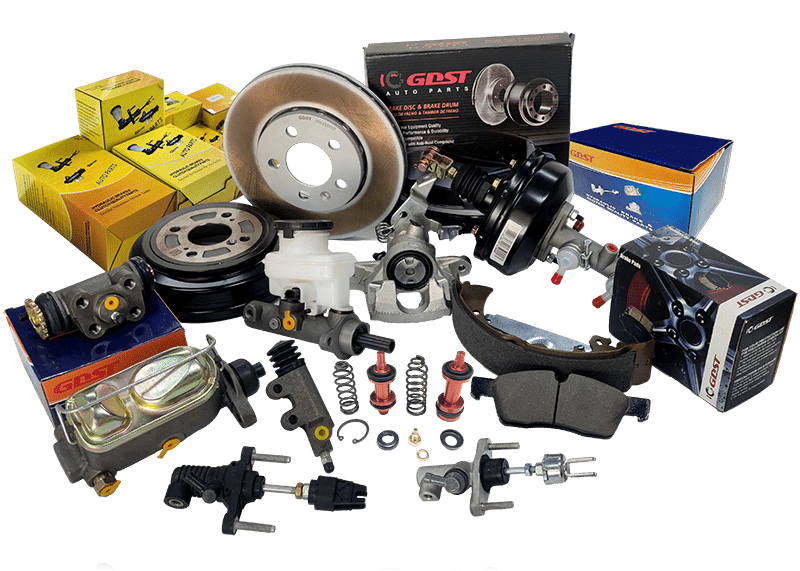When you’re in the drive shaft business, understanding the difference between a CV joint vs drive shaft isn’t just helpful — it’s essential. Customers expect clear, confident answers. If you’re a little unsure yourself, don’t worry. In this guide, we will tell you everything you need to know, simply and professionally.
Driveshafts use Universal Joints (U-Joints) to connect drivetrain components, while CV shafts use CV joints. CV joints allow vehicles to maintain consistent speed when turning at sharper angles, without increased friction or stress. In contrast, traditional driveshafts prioritize strength over flexibility, often at the cost of range of motion.
Is the CV Joint the Same as the Drive Shaft?

While closely related, the CV joint and drive shaft aren’t the same.
Think of the drive shaft as the highway, and the CV joint as the critical bridges connecting it to different destinations. The CV joint (short for Constant Velocity joint) is a part of the drive shaft assembly, designed to handle flexible movement without losing rotational speed.
Meanwhile, a traditional drive shaft (especially in rear-wheel-drive vehicles) typically relies on U-joints instead of CV joints, focusing on transmitting torque in more linear or stable layouts.
Understanding this distinction helps you explain repairs, replacements, and upgrades with authority.
What’s the Structural Difference?

Structurally, the CV joint and drive shaft differ in a few major ways:
- Drive Shaft:
A long, rotating tube (usually steel or aluminum) that connects the transmission to the differential. It’s built for durability and strength, typically using U-joints to handle minor flexing. - CV Joint:
A precision-engineered joint, often ball-shaped, allowing a drive shaft to transmit power smoothly even at significant angles. It ensures that power delivery stays constant, whether the wheels are straight or turning sharply.
Working principle differences:
- Drive shafts with U-joints can have variations in speed (causing vibrations) during sharp movements.
- Thanks to CV joints, your wheels stay at a steady speed even when you’re turning sharply, which means fewer vibrations and a much smoother ride.
When it comes to handling tight turns, CV joints do a better job. But for pure strength and straight driving, nothing beats a traditional drive shaft.
Different Applications and Vehicles

Understanding where each shines is key to professional advice:
For CV Joints:
- Vehicle Type: Commonly used in Front-Wheel Drive (FWD) and All-Wheel Drive (AWD) vehicles.
- Best for: Providing high maneuverability and smooth cornering performance.
- Typical Vehicles: Found in models like the Honda Civic, Subaru Outback, and Audi A4 Quattro.
For Drive Shafts:
- Vehicle Type: You’ll mostly find them in rear-wheel drive trucks, SUVs, and some bigger sedans.
- Best for: It provides strong torque transmission to ensure durability even when the car is subjected to large loads
- Typical Vehicles: Common in models like the Ford F-150, Toyota Tacoma, and Jeep Wrangler.
In FWD vehicles, CV shafts dominate because of the need for tight cornering and high flexibility.
In contrast, rear-wheel-drive trucks and off-road SUVs favor drive shafts for their strength and ability to handle heavy torque with minimal flexing.
Tip: Always double-check when customers mention a “drive shaft” on a front-wheel drive car — they often actually mean the CV shaft!
CV Joint vs Drive Shaft: Performance and Design Differences

When it comes to performance and design, each component carries specific advantages:
Flexibility vs Strength:
- CV joints handle flexible, dynamic angles without loss of speed.
- Drive shafts handle raw torque better but don’t flex as easily.
Durability:
- Traditional drive shafts are rugged and can last a lifetime with minimal maintenance.
- CV joints need periodic inspection and replacement (especially if the rubber boot fails).
Cost:
- CV joints are more expensive to manufacture and repair compared to U-joint-equipped drive shafts.
- Replacing a CV joint may involve replacing the entire CV axle for practical reasons.
Maintenance Signs:
- CV joint failures are often seen as clicking noises during rotation, grease leaks, or vibration during acceleration.
- Drive shaft issues show up as heavy vibrations or loud clunking noises when shifting gears.
For reference, if you’re quoting repairs, customers often ask about drive shaft CV joint replacement cost, typically ranging from $300 to $800, depending on parts and labor.
Also, when customers want technical visuals, offering a CV joint drive shaft diagram can help explain the internal parts like bearings, cages, and seals more clearly.
If you’re looking to offer the best advice to your customers or simply want to strengthen your understanding, taking the time to master the ins and outs of CV joints and drive shafts will set you apart in the industry.



